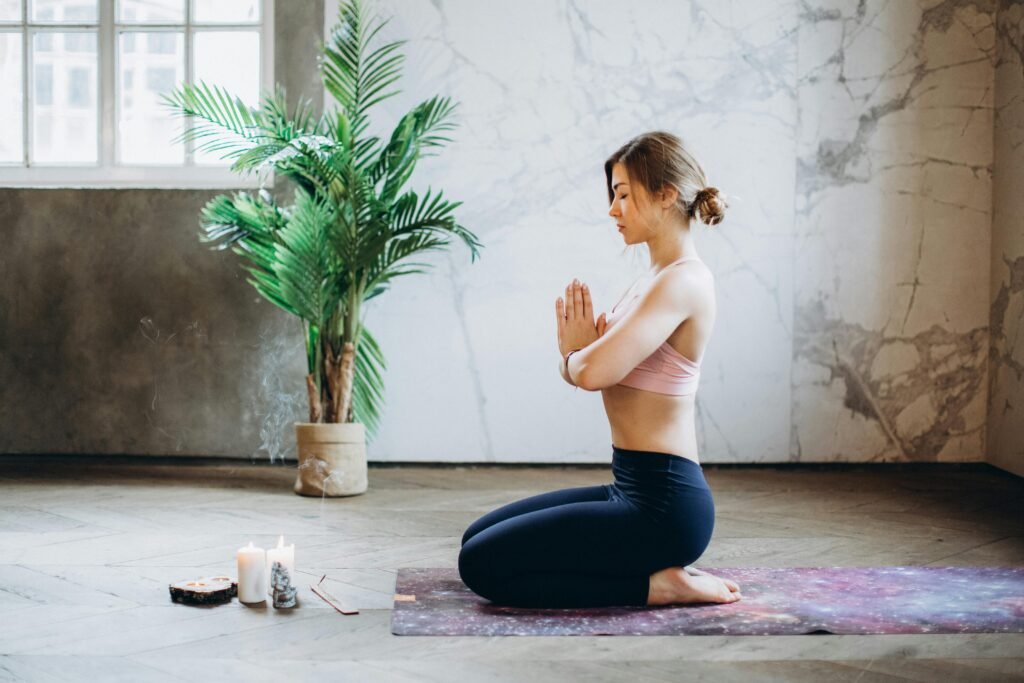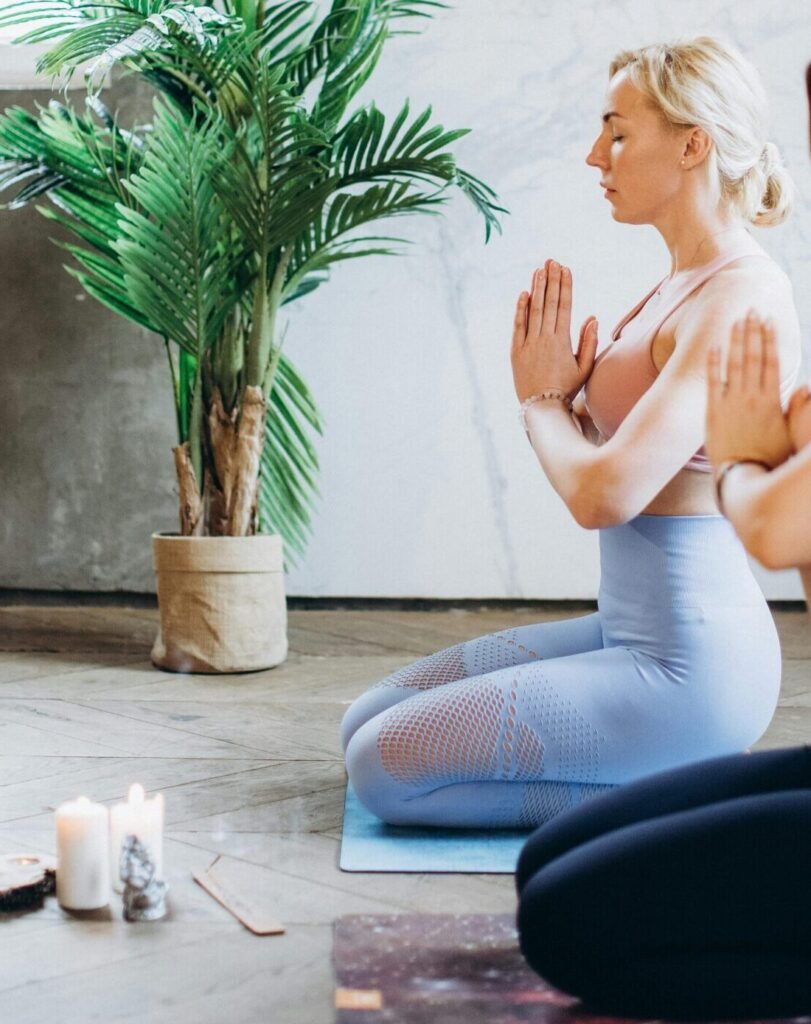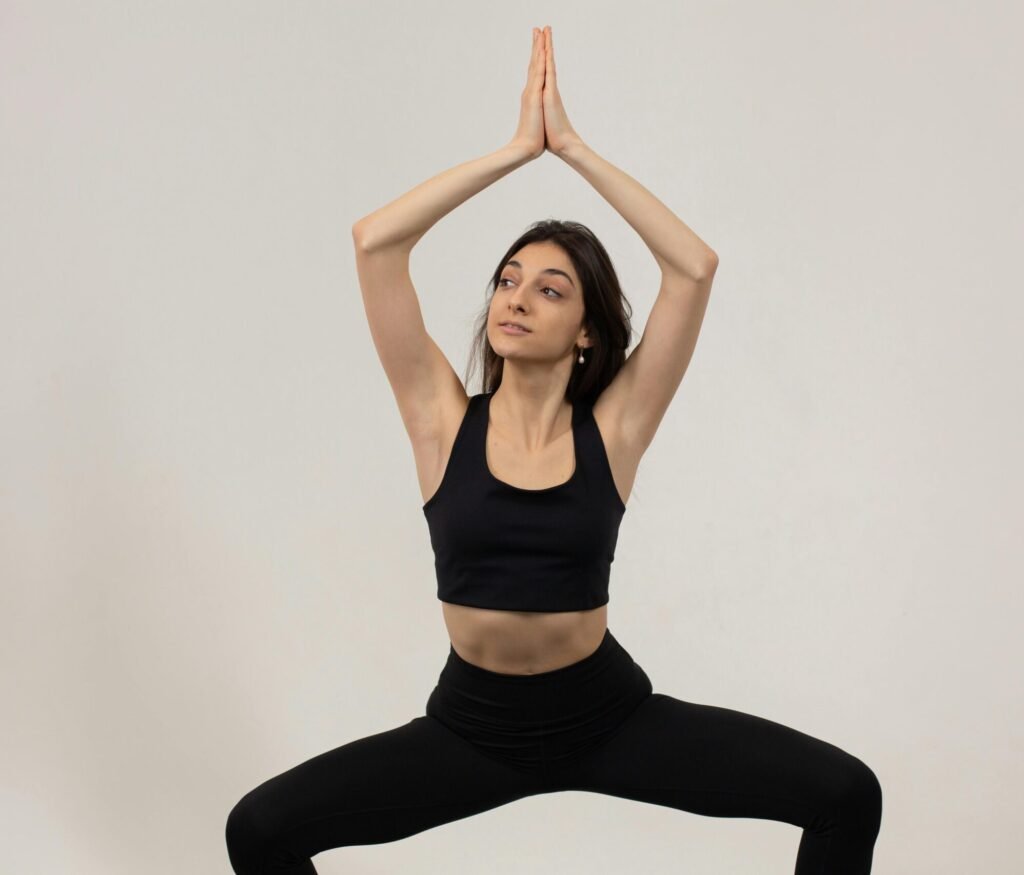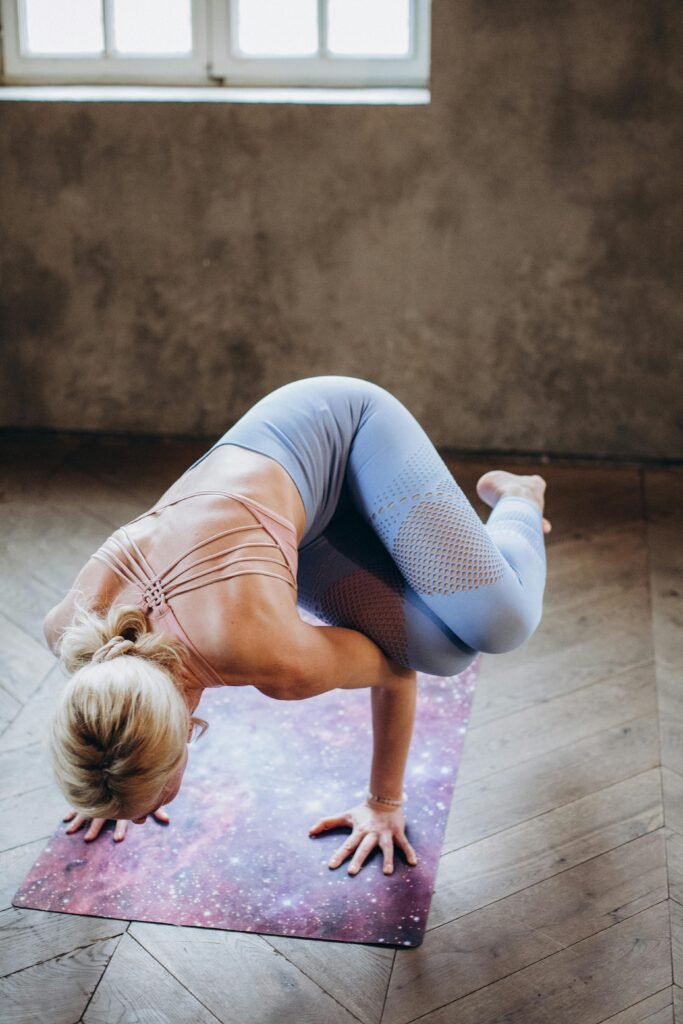Imagine sitting on your heels in a way that helps your digestion, calms you down, strengthens your core, and makes your balance better.
Vajrasana, or Thunderbolt Pose, is an important part of yoga that has many benefits because it is so easy to do. You can practice this pose, which is called “thunderbolt” because it makes you stronger and more stable. Thunderbolt Pose in yoga is great for strengthening your meditation, getting rid of back pain, or relaxing after a long day.
Table of Contents
You might be interested in how it works and what is thunderbolt pose in yoga let's Explore

WHAT IS THUNDERBOLT POSE IN YOGA?
Vajrasana, or Thunderbolt Pose in yoga, is one of the most important poses in yoga. It is good for both the body and the mind in many ways. This pose is easy to do but very strong, so people of all levels can do it. Adding Thunderbolt Pose to your yoga routine can help your health whether you are new to yoga or have been doing it for a long time.
Benefits of Thunderbolt Pose
Physical Benefits
- Improves Digestion: Vajrasana is known to enhance digestive health by stimulating the digestive organs.
- Relieves Back Pain: By promoting proper spinal alignment, this pose can alleviate back pain and tension.
- Strengthens Pelvic Muscles: The posture engages and strengthens the pelvic region, benefiting overall stability.

Mental and Emotional Benefits
- Enhances Focus: The pose calms the mind, making it easier to concentrate and meditate.
- Reduces Stress: By encouraging deep, mindful breathing, Vajrasana helps reduce stress and anxiety.
- Promotes Mental Clarity: Practicing this pose regularly can lead to a clearer, more focused mind.
How to Perform Thunderbolt Pose
1.Find a Comfortable Space
Choose a quiet, clean space where you can kneel comfortably. A yoga mat can provide extra cushioning for your knees and ankles.
2. Kneel on the Floor
Begin by kneeling on the floor. Keep your knees and ankles together. Ensure your big toes are touching each other, and your heels are slightly apart.
3. Sit Back on Your Heels
Gently sit back on your heels so that your buttocks rest on them. Your heels should touch the sides of your hips. If this is uncomfortable, place a cushion or folded blanket between your calves and thighs.
4. Position Your Feet and Ankles
Ensure that the tops of your feet are flat on the floor. The soles of your feet should face upward, and your big toes should touch each other.

5. Place Your Hands on Your Thighs
Rest your hands on your thighs, palms down. This position helps keep your spine straight and your shoulders relaxed.
6. Align Your Spine
Keep your back straight and your spine aligned. Avoid hunching your back or leaning forward. Imagine a straight line from the top of your head down to your tailbone.
7. Relax Your Shoulders
Ensure your shoulders are relaxed and not hunched up towards your ears. Draw your shoulder blades slightly towards each other and down your back.
8. Engage Your Core
Gently engage your core muscles to support your spine and maintain the pose. This engagement helps to stabilize your body and prevents slouching.
9. Focus Your Gaze
Direct your gaze forward at eye level or close your eyes to enhance concentration and inner focus. This helps calm the mind and deepen the meditative aspect of the pose.
10. Breathe Mindfully
Pay attention to your breath. Inhale deeply through your nose, filling your lungs completely. Exhale slowly and fully. Maintain a steady and rhythmic breathing pattern throughout the pose.
11. Hold the Pose
Stay in Vajrasana for a few minutes, gradually increasing the duration as you become more comfortable. Beginners might start with 1-2 minutes, while advanced practitioners can hold the pose for 5-10 minutes or longer.
12. Release the Pose
To come out of the pose, gently lean forward and lift your hips off your heels. Return to a kneeling position, then sit back on your heels or stretch your legs out in front of you.
13. Practice Regularly
To get the most out of Thunderbolt Pose, do it every day as part of your yoga exercise. Doing it after a meal can help your body digest food better, and doing it while you meditate can clear your mind.

YOU MIGHT BE INTERESTED IN READING ABOUT “HORSE POSE YOGA: GUIDE, PRACTICING TIPS AND BENEFITS.”
Common Mistakes to Avoid
- Hunching the Back: Ensure your spine remains straight and aligned.
- Tension in Shoulders: Keep your shoulders relaxed and away from your ears.
- Incorrect Foot Position: Your big toes should be touching, and your heels should be apart to support your hips correctly.
- Holding Breath: Maintain a steady, rhythmic breathing pattern. Avoid holding your breath, which can cause tension and reduce the pose’s benefits.
.
Practicing Thunderbolt Pose in yoga with attention to these details will help you achieve optimal results, making it a valuable addition to your yoga practice.

Advanced Variations
Modifications for Beginners
- Use a cushion: Place a cushion or yoga block between your heels and buttocks for added comfort.
- Support under ankles: Roll a towel and place it under your ankles if you experience discomfort.
Advanced Techniques
- Dynamic Vajrasana: Incorporate gentle rocking movements to enhance flexibility.
- Meditative Vajrasana: Practice deep meditation while maintaining the pose to deepen your mindfulness practice.
Tips for Thunderbolt Pose
Use Props: Utilize cushions or blankets for added comfort, especially if sitting on your heels feels uncomfortable.
Warm Up: Prioritize gentle stretches to prepare your body, preventing stiffness and injury.
Align Properly: Maintain a straight spine and relaxed shoulders to maximize benefits and avoid discomfort.
Focus on Breath: Deep, rhythmic breathing enhances relaxation and mental clarity during the pose.
Increase Duration Gradually: Start with short holds and gradually extend time in the pose as you build endurance.
Listen to Your Body: Respect any discomfort and adjust or use props as needed to avoid strain.
Incorporate Into Routine: Include Thunderbolt Pose in your daily practice for consistent benefits.
Engage Core Muscles: Lightly activate your core to support proper alignment and stability.
Stay Consistent: Regular practice ensures ongoing improvement in digestion, stress reduction, and focus.
Conclusion
To sum up, Thunderbolt Pose in yoga, also known as Vajrasana, has several advantages for the body and mind. With benefits ranging from stress relief and improved digestion to increased concentration and mental clarity, this straightforward yet effective pose has something to offer everyone. You can develop strength, stability, and inner serenity with consistent, thoughtful practice of Thunderbolt Pose, which will improve your general state of well-being. Now, gather your courage, locate your core, and use Thunderbolt Pose as a constant guide on your path of self-discovery.
FAQ
Most frequent questions and answers
The best time to practice Vajrasana is after meals, as it aids digestion. However, it can also be done at any time to promote relaxation and mental clarity.
Yes, beginners can easily perform Vajrasana. Modifications, such as using a cushion, can help make the pose more comfortable.
Start with holding Vajrasana for a few minutes and gradually increase the duration as you become more comfortable.
If you experience discomfort, try using props like a cushion or rolled towel. Ensure proper alignment and avoid pushing through pain.







[…] Often used for meditation and pranayama, this kneeling pose is said to be as strong as a thunderbolt. […]